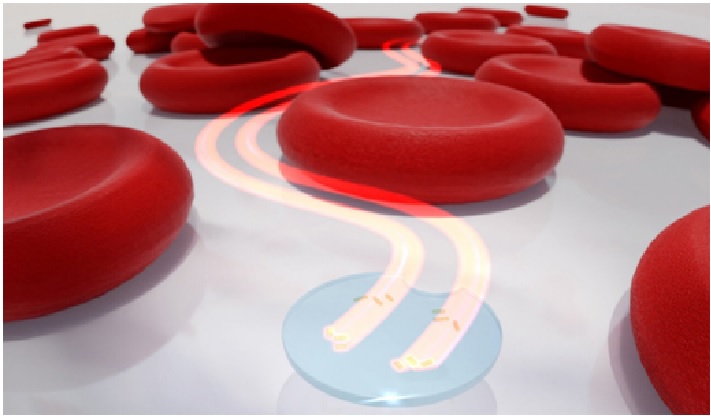Engineers get under the skin of ionic skin
Ionic skins have demonstrated considerable advantages in the effort to create smart skin that matches the sensing capabilities of real skin. They are comprised of biocompatible, flexible hydrogels that employ ions to transport an electrical charge. Unlike smart skins composed of plastics and metals, hydrogels are as soft as real skin. This provides a more natural feel to the prosthetic arm or robot hand they are mounted on, and makes them comfortable to wear. [1]

Figure 1. Engineers get under the skin of ionic skin
Figure 1 shows these hydrogels can generate voltages when touched, but scientists did not clearly understand how — until a team of researchers at UBC devised a unique experiment, published today in Science.
“How hydrogel sensors work is they produce voltages and currents in reaction to stimuli, such as pressure or touch — what we are calling a piezoionic effect. But we didn’t know exactly how these voltages are produced,” said the study’s lead author Yuta Dobashi, who started the work as part of his master’s in biomedical engineering at UBC. [2]
The researchers say this new knowledge confirms that hydrogels work in a similar way to how humans detect pressure, which is also through moving ions in response to pressure, inspiring potential new applications for ionic skins.
“You can imagine a prosthetic arm covered in an ionic skin. The skin senses an object through touch or pressure, conveys that information through the nerves to the brain, and the brain then activates the motors required to lift or hold the object. With further development of the sensor skin and interfaces with nerves, this bionic interface is conceivable.” [3]
Another application is a soft hydrogel sensor worn on the skin that can monitor a patient's vital signs while being totally unobtrusive and generating its own power.
"We can imagine a future where jelly-like 'iontronics' are used for body implants. Artificial joints can be implanted, without fear of rejection inside the human body. Ionic devices can be used as part of artificial knee cartilage, adding a smart sensing element. [4]
References:
- https://scitechdaily.com/ionic-skin-engineering-smart-skin-that-mimics-the-sensing-capabilities-of-natural-skin
- https://todayworldnews.in/science/engineers-get-under-the-skin-of-ionic-skin-sciencedaily
- https://www.labmanager.com/news/engineers-get-under-the-skin-of-ionic-skin-28027
- 4.https://www.sciencedaily.com/releases/2022/04/220428142837.htm
Cite this article:
Thanusri swetha J (2022), Engineers get under the skin of ionic skin, AnaTechMaz, pp.163















